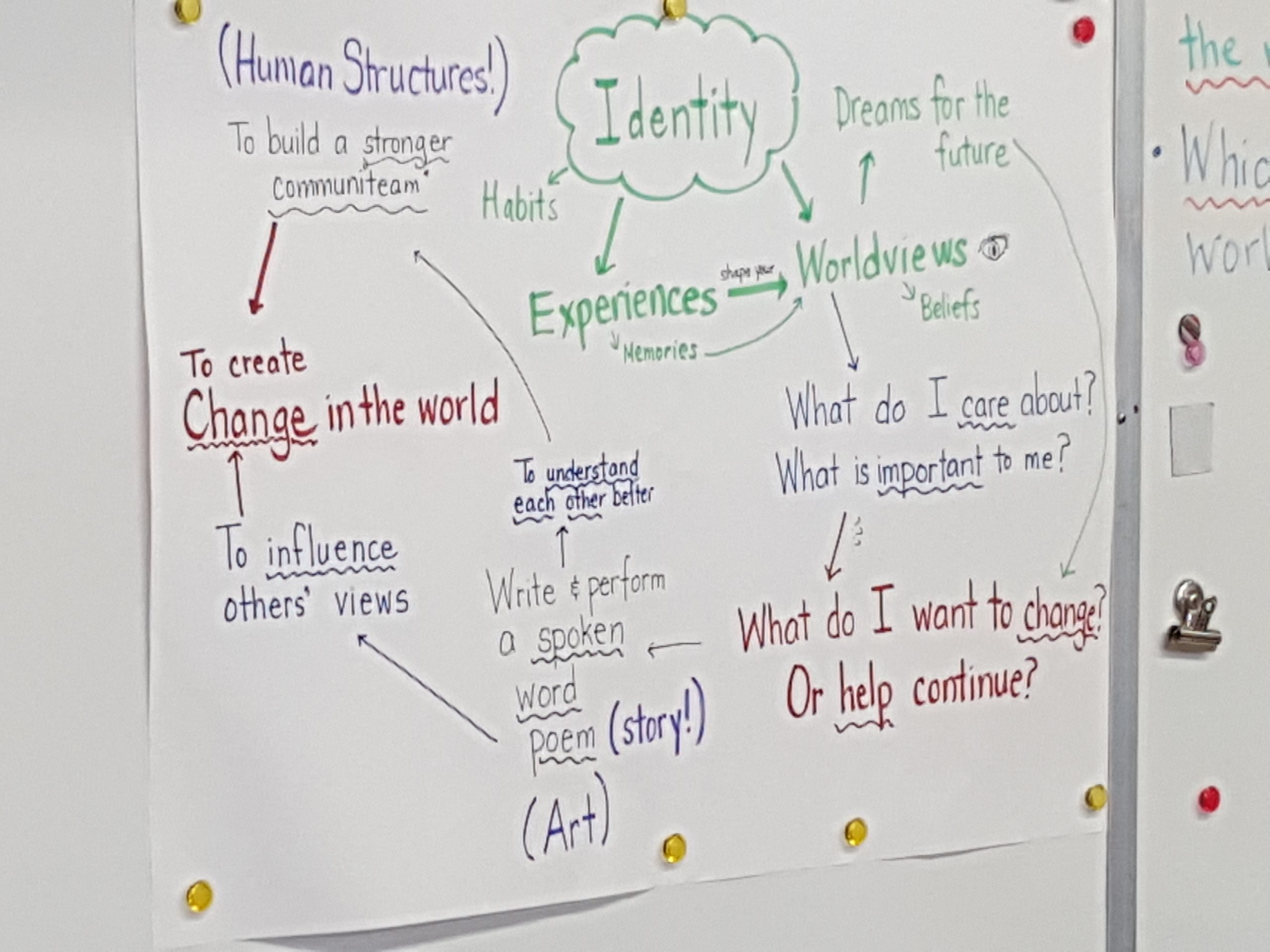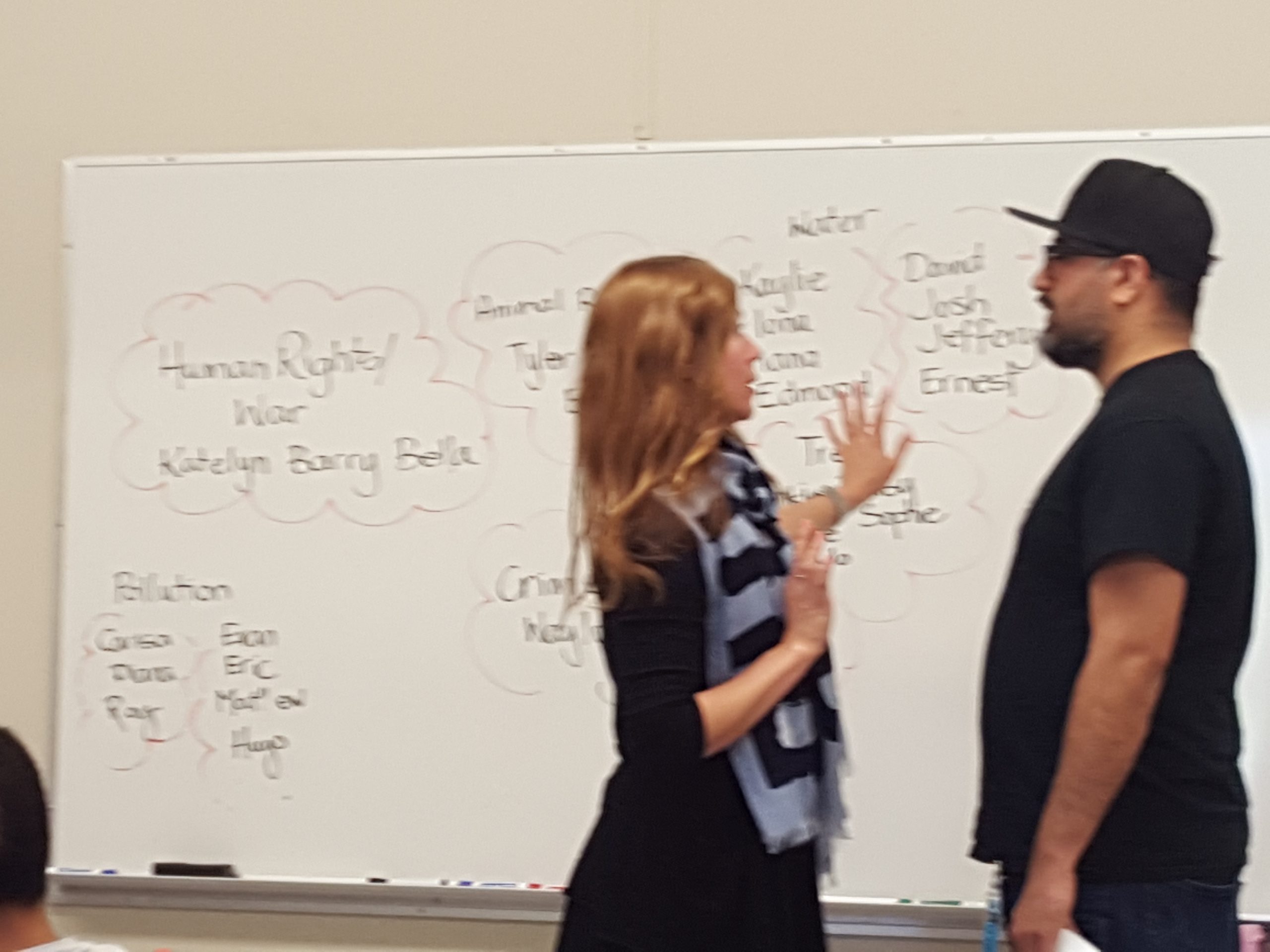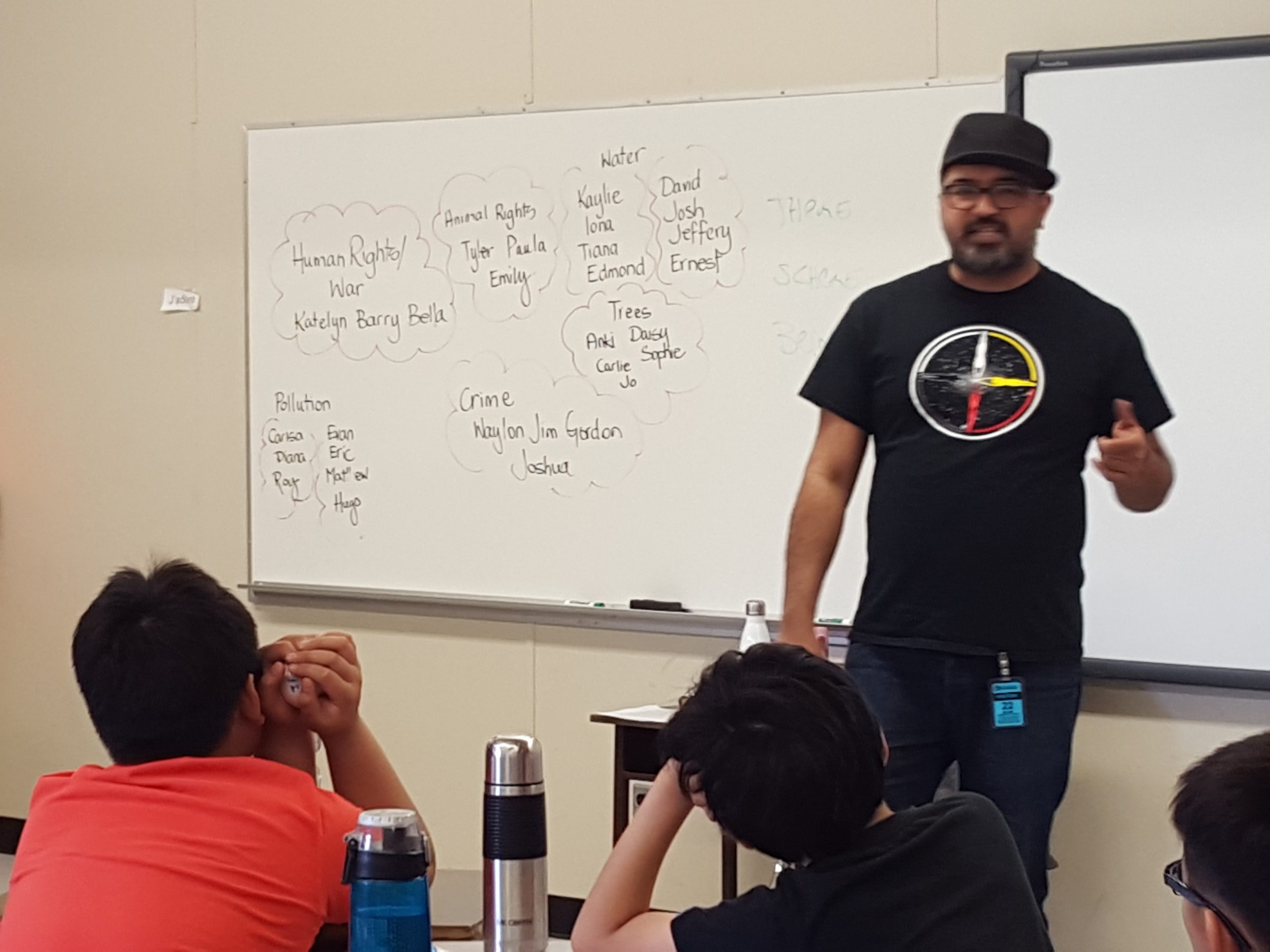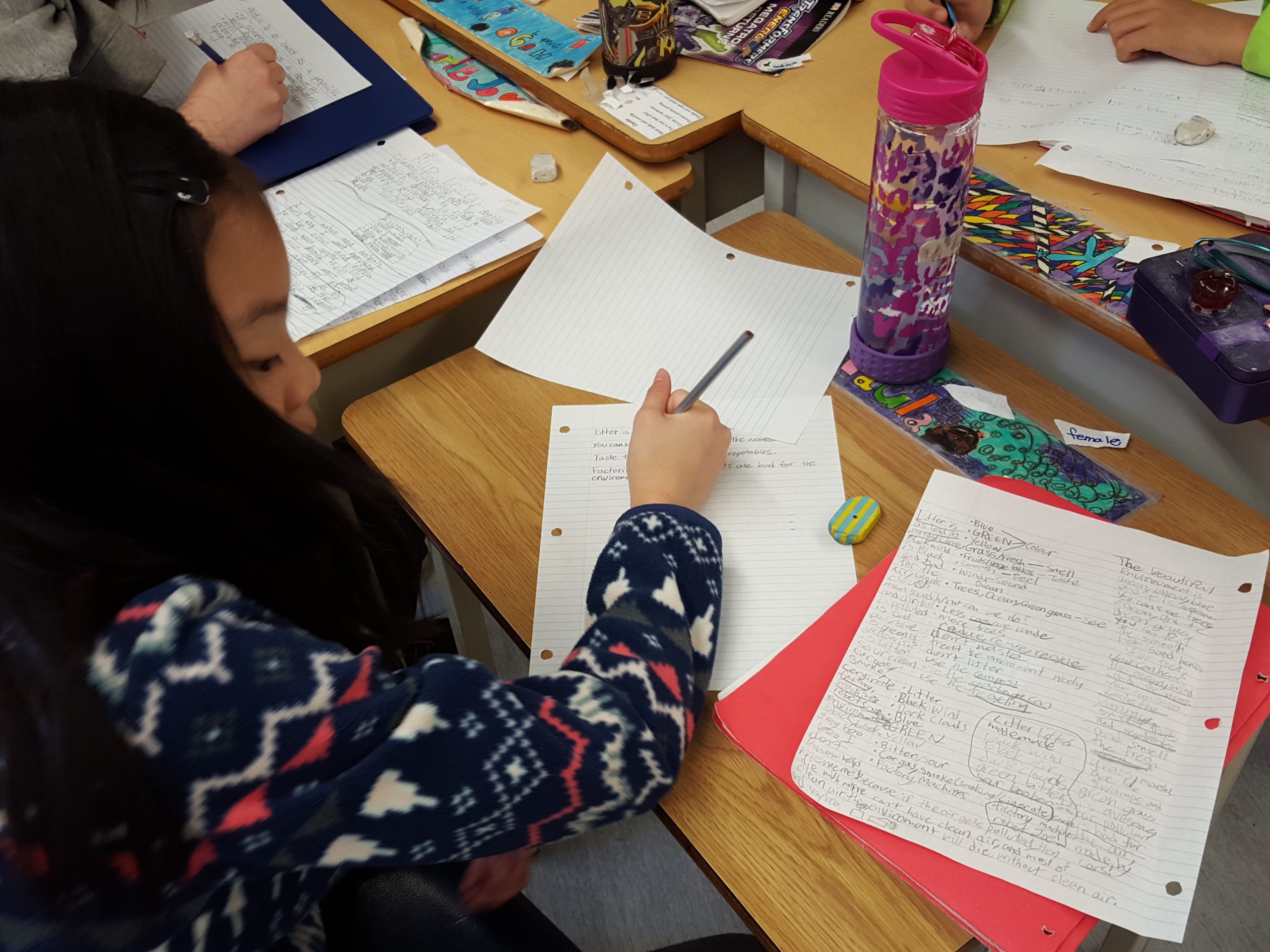Archibald Blair: Art for Social Change
Language Arts, Science, Social Studies
School: Archibald Blair Elementary
Teacher: Karen Choo, Amy Trainor
Artist Collaborators: Rup Sidhu
Class: Grade 4/5
Overview
The class examined the intersecting relationship between identity, art and activism. This included an exploration into student personal identities and the stories that shaped their worldviews. Students were asked to think critically about what is important to them, and how this informs; influences and affects how they engage with the world around them. Students were then introduced to artists who have used creative expression to advocate for positive change, particularly in environmental activism. Lastly, students used spoken word poetry to express matters that are close to their hearts, and the changes that they wanted to see in the world around them.
Connection to the Vancouver Biennale Exhibition
The class visited Marcus Bowcott’s Trans Am Totem and Jonathan Borofsky’s Human Structures Vancouver to reflect upon the role of art in environmental activism. Students considered the identities of these artists and how they are trying to transform worldviews and thinking. The teachers also encouraged the class to explore how individuals build the world by connecting and coming together. Students reflected upon what this could mean in relation to the advocacy work of these artists. This included exploring how and why art is a powerful tool for positive change.
BIG IDEAS
Creative expression allows us to powerfully explore our personal identities, communicate our worldviews, and create social change.
Referencing British Columbia’s New Curriculum:
Arts Education (Grade 4 and 5)
- Creative expression is a means to explore and share one’s identity within a community
- Exploring works of art exposes us to diverse values, knowledge, and perspectives
- Dance, drama, music, and visual arts are each unique languages for creating and communicating
- Works of art influence and are influenced by the world around us
English Language Arts (Grade 4 and 5)
- Language and text can be a source of creativity and joy
- Using language in creative and playful ways helps us understand how language works
- Texts are created for different purposes and audiences
- Exploring text and story helps us understand outselves and make connections to others and to the world
Science and Social Studies (Grade 5)
- Science: Humans use earth materials as natural resources
- Social Studies: Natural resources continue to shape the economy and identity of different regions of Canada
Guiding Questions
- What shapes our personal identities and worldviews?
- How can we use art to effectively transform others’ thinking and worldviews?
Cross-Curricular Access
As a part of the Science and Social Studies units, students learned about natural resources, sustainability and the interconnectedness of the ecosystem. They read about and participated in activities that helped to develop their understanding of these ideas and concepts that were related to the ideas behind the works of art that they were examining.
For the most part, this project and the themes of the artworks explored was integrated into every aspect of the students learning throughout the term. In this way, the project had an almost entirely cross curricular implementation.
Learning Process/Timeline
The themes and big ideas of the project were explored in several subjects beginning in early January.
The class began by exploring the larger theme of identity and how identity, experiences and beliefs shape individual worldviews. From there, the students were asked to explore their own identity by asking themselves “What do I care about?” and “What is important to me?” Leading them to discover what they want to help change in the world.
The self-discovery process helped to inspire the students’ spoken word poems. The intention of these poems was to understand themselves and each other better in order to influence others views to help create positive change in the world.
The artist workshops focused on the literary tools, ideas and themes expressed through the mode of spoken word poetry. Students worked on creating their own spoken word poems, and critiqued videos of spoken word poets throughout the term.
The visit to the artworks in April get the students thinking about how art can demonstrate different points of view in order to encourage shifts in thinking and alter worldviews.
Inquiry Challenges
What shapes your personal identity? What shapes your worldviews?
Through story and poetry writing and visual arts activities, students got to explore the role that personal experiences/stories, family history, heritage, a sense of place, relationships and communities have had in shaping their personal identities and worldviews. (ex/ “Where I’m from” poems)
How does your identity and worldview influence ad affect how you interact with the world around you?
Students had to examine their perceptions of and interests in the world around them and how they respond to ideas and situations.
How is art a language? What are these particular artists trying to communicate to you? What does this say about the identities of these artists?
From examining the Biennale art installations Trans Am Totem and Human Structures Vancouver students were asked to respond to these questions
How can art be used to transform worldviews and thinking?
Students were asked to reflect upon whether or not their thinking has changed from examining the work of artists (“I used to think…Now I think…” activity)
How is art a powerful tool for creating positive change in the world?
Students were asked to answer this question after examining Human Structures Vancouver, particularly in relation to the Trans Am Totem.
What is close to your heart? how can you artistically express yourself on something that you would like to change?
Students observed and examined the work of spoken word poets. They did free writing activities with the artist and created identity collages (heart maps) with their teachers.
Student Creation
Students worked throughout the term on their own spoken word poems and on performance. Their poems were written to express something that they care about and wants to see change in the world. They were able to choose to share their spoken word poems in the form of writing, a slideshow, and audio performance, a video performance or a live performance. They performed in groups with 3-4 other students for their classmates, and other classes during a showcase in June.






